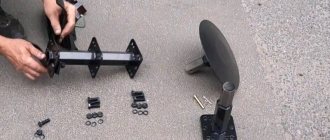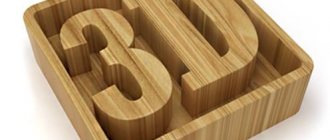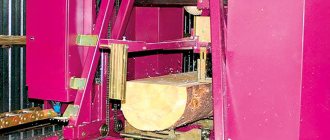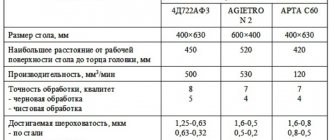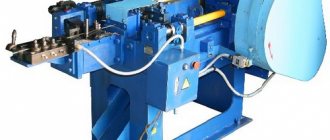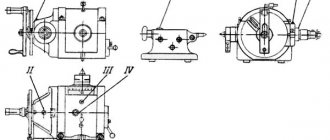04/14/2021 Author: VT-METALL
Issues discussed in the material:
- The essence of the process of punching holes in metal
- Types of equipment for punching holes in sheet metal
- Metal coordinate punching technology
- Scope of application of coordinate punching of sheet metal
- 4 types of manufacturing defects when punching sheet metal
- Correct calculation of the force of punching holes in metal
Metal punching is one of the types of metalworking used to produce holes of a given shape in a workpiece. Depending on the tasks being solved, different types of equipment and tools are used for these purposes: from manual to fully automated CNC machines.
Unlike drilling, punching allows you to create many precise holes in sheet metal in a single pass, saving your company resources. From our material you will learn what equipment is used to perform these operations and what the metalworking process itself looks like.
Required Tools
Professional metal drills (for example, Bosch, Makita, Metabo or Hawera) are made exclusively from high-speed steel HSS. Some are coated with a protective layer, which increases their wear resistance when drilling.
Hand tools - drills and drill bits should be selected carefully. If you have no experience in this area, you should seek advice from a store employee. Purchasing an expensive, high-end drill does not always guarantee its long service life.
Compliance with the technology for making holes in metal and a correctly selected drill significantly increases its service life and protects against premature wear. Basic rules for operating cutting tools:
- Selecting the appropriate type of gimlet for drilling metal of a certain hardness. Many manufacturers have developed entire programs using which you can select the appropriate tool.
- Selecting cutting modes, setting the correct rotation speed.
- Correctly selected feed, application of appropriate pressure on the cutting tool.
- Application of cooling. An oil-based emulsion is recommended.
- Proper fastening of the material (for example, in a vice).
- Attaching the drill to the stand is precise and perpendicular.
- Use of an expanded set of gaskets when drilling through holes.
Technological process
Drilling is the process of removing small parts of the material being processed, chips, using a drill. During drilling, the temperature of the workpiece increases. The cutting force leads to damage, the friction force causes a change in the geometry of the cutting edge, plus high temperature, as a result the tool gradually becomes dull.
Most drills are made from high-speed steel with varying cobalt content. It is very important that it is sharpened correctly: the cutting edges are of equal length, the jumper between them is located along the axis of the cutting tool.
This ensures that both edges will perform identical work during the drilling process. The drill will not have runout, the hole diameter will correspond to the size, and heating of the part and the tool will be minimized.
A drill-drill with chamfer correction has a smaller jumper, due to this the cutting edges are lengthened. With such drills you can drill a hole without preliminary marking with a core.
The choice of drills depends on the type of work being performed . NWKa HSS Baildon drills are optimal for drilling:
- structural steel;
- cast iron;
- brass;
- bronze;
- aluminum;
- plastics;
- tree.
Drilling metal
A special feature of the drills is the presence of a sharp edge, which allows for mechanical processing of the material. They have an equal diameter along the entire length, and the blade is sharpened at an angle of 118°. The sharpening angle varies depending on the hardness of the material, for example, for alloy steel, it is 135°. This type of drill is made of HSS steel with 5% cobalt. During operation, they require cooling with special drilling oil .
In order to drill a nozzle in metal evenly and accurately, it is necessary to use a guide device - a jig.
When drilling, it is best to use as little force as possible. When drilling a through hole, when the moment of exit of the cutting tool approaches, it is necessary to reduce the feed so that the part does not tear out, the drill does not break, or burrs do not form.
A conical drill is used to produce a conical hole in metal. It is used as an independent tool. They can drill a cylindrical hole, turning it into a conical one. A conical hole in the metal is made on a lathe in order to drill and bore the resulting nozzle with a cutter.
Cutting modes
The most common mistake is using too high a drilling speed . The more difficult the material to process, the lower the drilling speed should be used. For example, in the case of drilling an 8 mm hole in brass, the drilling speed should be 2500 rpm, for harder alloy steel - 800 rpm. The best sign that the drilling speed is correct is nice, long chips.
Depending on which tool to choose, cutting parameters are important. It is necessary to select the correct rotation speed and feed. Bench-top drilling machines provide the best parameters, but they cannot be used everywhere. It is necessary to follow the principle: the lower the speed and the lower the feed, the longer the tool will last.
For example, take stainless steel, 8mm hole, 4mm thickness, cooling lotion or oil, HSS drill bit, drill or drilling machine: The revolutions should not exceed 400 rpm, and the feed should not be more than 0.10 mm/ turnover In other words, you can drill at a speed no higher than 400 rpm. But this speed is not optimal. Therefore, it would be optimal, for example: 170 rpm, and the feed for every 30 revolutions is 1 mm (three times less than recommended).
Cooling the drill during the drilling process is very important. Use emulsions, oils, drilling sprays. Water should be avoided, as it does not have the properties of lubricating fluids, but only cools.
Large diameter holes
To the question of how to drill a large diameter hole in metal, there is only one answer: in the technological process of drilling necks . For example, you need to increase the neck and get a size of thirty millimeters in diameter. First, it is drilled with a tool of a smaller diameter, for example, four millimeters, then to a size of 8 millimeters, then 12 millimeters, and so each size is expanded to the result.
Read also: Bevel gears advantages and disadvantages
A large diameter neck in a product can be made on a lathe. The operation is as follows: drilling a hole, boring the neck of the desired size. As pre-drilling is required, the process can be divided into stages: small-diameter drilling, reaming with a gradual increase in drill diameter.
Drilling thin sheet metal
The peculiarity of obtaining an armhole in a thin sheet of metal is its reliable fastening . After the drill comes out to the other side, there is a danger that the sheet may suddenly jam and tear out if it was held in your hands. The best way to securely fasten a sheet is a clamp. In this case, the risk that the tin will be torn out is much less. The number of burrs formed is reduced, which will greatly facilitate the finishing of the element.
If the metal is 0.1 millimeter thick, you can make a hole without a drill by using a metal punching tool. Its design is very simple, like pliers. A punch is attached to one lever, and a matrix to the other. The principle is the same as cold stitching using a stamp.
To cut a through groove in sheet steel, you need to drill a successive row of holes according to size, connecting them into a single slot using a chisel and hammer. To do this, it is necessary to cut off the bridges between the holes and smooth out the unevenness with a file.
Metal pipes
When drilling a metal pipe, make sure that the workpiece is securely secured in the vise. It is advisable to mount the drill on a vertical stand. Insert a piece of wood of the same shape and size inside the pipe, which will protect the pipe from deformation. In this case, use low feed.
Getting narrow nozzles
Drilling deep holes of small diameter can only be done on a special machine or lathe using a device. The part is clamped into a 3-jaw chuck and checked for runout with an indicator. The device is mounted on a tool holder. A drill chuck with a drill is installed in the fixture. First, the hole is centered, then the nozzle is drilled to a given depth. Using a tailstock is problematic, since it needs to be constantly removed to remove chips and lubricant.
To obtain vertical holes, a right angle drilling device is used. For an electric drill, this is a vertical stand at an angle of 90 degrees to the base. The easiest way is to use a vertical drilling machine.
Drilling large holes is not a problem if you choose the right tool. For example, such work may be necessary to secure a channel or metal corner. The easiest way is to use an electric drill, but getting a hole with a diameter of, for example, 15 mm requires a lot of effort. To drill a large diameter hole in metal, special devices and core drilling technology are used.
Scope of application of coordinate punching of sheet metal
In the mechanical engineering industry, coordinate punching of metal is widely used. This technology is in high demand in the field of repair and construction work. For example, perforated sheets made using this technology are widely used in the installation of various structures, including decoration elements.
Perforated products obtained using metal punching allow you to very accurately implement all kinds of design ideas and perform particularly complex tasks for which working with strict adherence to design and technical documentation is the most important point.
The described metal punching technology is widely used in the production of the following structural elements:
- fencing;
- parts of specialized machines, machine tools;
- construction supports, assembly elements;
- different types of showcases;
- various production racks;
- advertising billboard structures and many other products.
Dies for punching holes in sheet metal are made individually, this allows designers to design the most non-standard technological openings, produce holes and implement perforation on sheet material with individual parameters.
The process of punching holes in sheet material is high-speed. Technology using coordinate punching and metal cutting allows you to move a sheet or part in a jig press with great accuracy and speed, making it possible to punch a large number of parts in a short time. Using a highly efficient press, you can produce a finished part with smooth hole edges that do not require additional cleaning or surface treatment.
The use of this technology allows manufacturing plants to process blanks and structural elements at a fairly high technological level, launch mass production of parts or perforated sheet material, and, in addition, manufacture products for individual orders.
Technical characteristics of the technology:
- Excellent energy efficiency indicators.
- High efficiency and precision of execution.
- Economical.
Drill accessories
There are several accessories for drills that can make the process easier and make a large hole smooth:
- Drilling jig. This device is a housing in which there are several guide bushings for drills of different diameters. The material used to create the bushings is harder than drill bits, so you don't have to worry about the tool moving to the side while drilling and widening the hole.
- Drill guide. This product allows you to fix the tool in such a way that it does not deviate to the side during drilling. If such a product is not available, the tool may move to the side, resulting in an uneven edge. It can also be mounted at an angle. But when drilling metal products, this is usually not required.
- Drill stand. A DIY product like this can be an inexpensive replacement for a drilling machine, as it allows you to carry out work more comfortably. When using a stand, a fixed tool moves along the bar using a lever. In this case, displacement is completely eliminated, since the workpiece being drilled is securely held due to the presence of a clamp.
Using these products, you can greatly facilitate the process of drilling metal products.
Feature of deep holes
To drill a deep hole in metal, it is best to use a lathe. Cooling must be done during this process. In this case, the chips must be forcibly removed. Periodically, the tool is removed from the workpiece to remove chips.
When working without specialized devices, you should not recess the nozzle more than 2/3 of its length. Water must be used for cooling during operation. If the work is done in several approaches, changing the angle is not allowed.
Features of large diameter holes
This procedure is more complex than deep drilling. Cutting work is carried out either using a crown or using a cone drill. Crowns for metal are similar to products for concrete and drywall. The only difference is the material used to create the cutting edge.
Drilling can also be carried out with standard products in several stages. To do this, first use a nozzle of small diameter. Then a larger tool is selected.
The most convenient way is to use cone drills. Such devices allow you to drill a large hole in one go. To do this, the tool is simply recessed into the material.
Read also: How to check a commutator motor with a multimeter
Metal coordinate punching technology
Coordinate punching and metal cutting are used in cases where it is necessary to create perforated parts with a wall thickness of about 6 mm. This technology cannot be used for processing brittle metals and alloys.
If it is necessary to produce a large number of similar holes on sheet metal at a certain distance from each other, special equipment is usually used - coordinate punching machines. In the modern industrial industry, this method of processing steel sheet material is distinguished by its excellent accuracy parameters and excellent quality.
Using a punching press, you can create holes of the required size and shape in a sheet of metal at any specific point. To perform the operation, the sheet blank must be placed and firmly secured on the working table of the pressing equipment using clamps. With the help of machine mechanisms, the grippers move simultaneously with the fixed sheet workpiece along a certain trajectory according to the part processing program entered into the equipment computer.
Hassle-free drilling
During work, you can use a small section nozzle, as well as a used grinding wheel for an angle grinder. It is important to remember that it should have a smaller diameter than the hole being created.
Before carrying out work, a circle for the hole is marked on the workpiece, and the second circle will be smaller than the first by a distance equal to the diameter of the drill used. After this, 2 holes are marked in opposite places of the circle. It is necessary to retreat 3 mm from them and mark the places for drilling. Thus, drilling occurs along the entire drawn circle. If additional work is necessary, some areas will have to be processed with a chisel. This will create jagged edges that will then need to be filed down. It is important to ensure that during work the circumference does not increase, i.e. do not expand the planned diameter.
Cone drill
The described types of drills are made from tool steel. The shanks of such products can be hexagonal or cylindrical. The cutting edge removes all burrs, so the edge is smooth. The end of the drill head has a sharpened point that allows pre-drilling of the material.
Using these products you can:
- create cuts with a diameter of up to 30 mm;
- forget about jagged edges;
- carry out boring of various diameters without changing the nozzle.
Thanks to step drills, you can create cuts of various diameters in sheet steel up to 4 mm thick. Unlike a simple cone drill, when using such products, the drilled diameter is fixed.
The disadvantages include:
- the need to use tools with low speeds and high torque;
- sensitivity even to small distortions.
Despite these disadvantages, this attachment allows you to conveniently work with metal plates, quickly drilling circles of the required diameter.
Metal crown
Metal processing is a complex process, so such work is usually carried out using specialized equipment. To carry out work at home, you can use core drills.
Such products allow you to make the edges round and centered. In this case, a standard drill is used for drilling. The products consist of several parts:
- crown;
- centering attachment;
- product shank;
- screws that are necessary for fastening.
When using a core drill, the speed of work increases up to 10 times. Another advantage is the ability to accurately drill in the range from 1.2 to 15 cm.
In this case, there is no need to perform alignment during drilling. It is also worth noting that such drills have higher wear resistance compared to twist drills.
Before starting work, a centering drill is installed in the center of the circle, after which drilling is carried out. After this, the drill is retracted and the work is carried out with a crown.
Correct calculation of the force of punching holes in metal
Metal punching is characterized by the fact that when making holes, a rather complex pattern of loads arises with an increased concentration in the area of contact between the punch and the matrix.
The movement of the punch when entering the material does not occur with the entire end surface, but only with the outer annular surface. There is a response from the matrix. In addition, the pressure that appears in the area of interaction of such three components may be distributed unevenly.
In other words, during cutting, two forces arise, due to which a circular bending moment is formed with an effect aimed at bending the sheet blank. This bending force causes pressure to be exerted on the die and punch edges. It must also be taken into account that during the action of friction forces, tangential forces arise. From the above, we can conclude that during metal punching, a force field of a non-uniform nature arises. Therefore, to perform calculations, a conventional technical value such as shear resistance is used.
Based on the results of previous studies, it was found that resistance is influenced not only by the properties of the metal, but also by the following indicators: the level of hardening, the thickness of the material being cut out, the gaps between the matrix and the punch, as well as the speed of the punching process.

